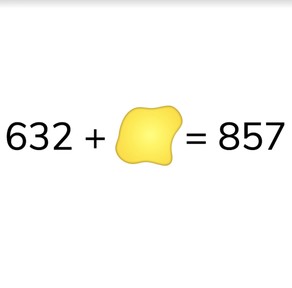
Fill in the blank problems + - to 1,000
Solve fill in the blank math problems with addition & subtraction with numbers t



8,000 schools use Gynzy
92,000 teachers use Gynzy
1,600,000 students use Gynzy
General
Students learn to add and subtract in fill in the blank math problems up to 1,000.
Standards
CCSS.Math.Content.2.NBT.B.7
Learning objective
Students will be able to add and subtract up to 1,000 in fill in the blank problems.
Introduction
The interactive whiteboard has three addition problems and three subtraction problems. The numbers in the problems are not written down but rather spoken (click on the little speaker). Ask students to listen to the numbers and to solve the given math problems. You can also choose to have students first listen to and write down the problems, and then to solve the problems.
Instruction
Explain that fill in the blank problems are math problems in which one part of the math problem is missing. Tell students that you will first discuss how to solve fill in the blank addition problems, and then fill in the blank subtraction problems. Explain to students that when trying to determine the blank in an addition problem you can take away the number you have from the total. For example- if you take the addition problem 247 + ... = 689 you make the subtraction problem 689 - 247 = 442. Show this again using an addition problem in which the second addend is blank. Next explain to students that when solving a fill in the blank subtraction problem where the second number (the subtrahend) is missing, you can easily take the first number (the minuend) from the difference to determine the second number (the subtrahend). For example- if you take the subtraction problem 685 - ... = 251 you turn it into the subtraction problem 685 - 251 = 434. If you need to determine what the first number (the minuend) of a subtraction problem is in a fill in the blank problem, explain to students that you can add the second number (the subtrahend) and the difference together to determine the first number (the minuend). Show this using ... - 352 = 211, and turn it into 532 + 211 = 743. The interactive whiteboard then shows four fill in the blank problems. The students are given four math problems that represent how to determine the missing number. Ask students to drag the correct math problems to the thought bubbles. The students are then given fill in the blank problems as well as numbers that complete the given math problems. Ask students to drag the numbers to the blanks and have students explain their strategy as they do so. Finally there are a few problems given in which the plus or minus sign is missing. Ask students to determine which one the math problem is missing. You can check their answers by erasing the grey square.
Check that students are able to solve fill in the blank math problems with addition & subtraction with numbers to 1,000 by asking the following questions:
- How can you easily determine which number belongs in the empty space of a math problem?
- What kind of math problem do you make to solve 465 + ... = 682?
- What kind of math problem do you make to solve ... - 327 = 251?
Quiz
Students are first asked to fill in the blank with addition problems. Then they are given subtraction problems. They are also asked to determine which answer correctly completes the problem with either a plus or minus sign or plus/minus sign and a number.
Closing
Remind students that it is important to be able to determine which number fills in the blank and ask students how they can figure out which number completes a given math problem. The interactive whiteboard then has a collection of math problems which got paint splatters over the problems! Ask students to figure out which numbers complete the given math problems. You may have them work individually or in pairs. Make sure to have them explain their thinking.
Teaching tips
Students who have difficulty with this learning goal can be supported by making use of a number line. They can count in steps from the given number to the total or to the difference.
The online teaching platform for interactive whiteboards and displays in schools
Save time building lessons
Manage the classroom more efficiently
Increase student engagement
Discover more!
About Gynzy
Gynzy is an online teaching platform for interactive whiteboards and displays in schools.
With a focus on elementary education, Gynzy’s Whiteboard, digital tools, and activities make it easy for teachers to save time building lessons, increase student engagement, and make classroom management more efficient.



